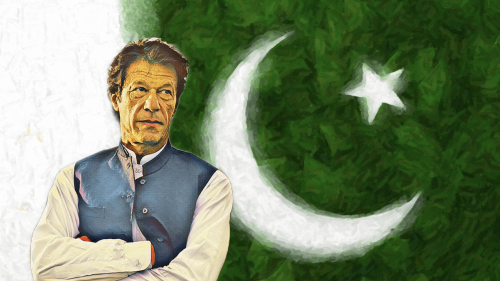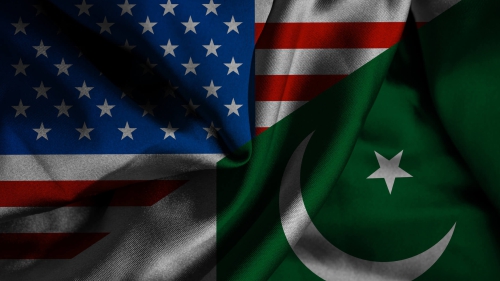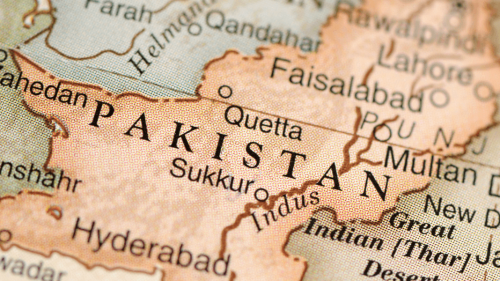The Pakistan Question: Was my parents’ generation wrong?

The emergence of Bangladesh in 1971 has raised the age-old question: was Muhammad Ali Jinnah’s Two-Nation Theory wrong?
Since the late 1970s, when I came to North America to pursue graduate studies, I have been approached multiple times by quite a few of my Indian classmates and colleagues who told me during casual conversations that my parents’ generation had made a colossal mistake and that we would have all prospered better had British India not been divided, and that there was no future for Bangladesh unless she joined the Indian federation.
They are wrong on both the counts. The prosperity that Bangladesh has made is an envy to most Indians, which could not have been possible if my parents’ generation did not join the Pakistan movement.
I had the opportunity of asking the question to my father many times. Every time his answer has been an emphatic “no”. He asked me, “Did you read Sarat Chandra’s Mahesh? If you want to understand how Muslims were treated, read that story.”
The choice was a clear and right one for progressive Muslim students like my father who passionately supported the Pakistan movement. They had witnessed firsthand the daily humiliation faced by most Muslims in the hands of Hindu zamindars and the loan-sharks whose oppression knew no bounds. Millions of Muslim peasants were trapped by the latter in a vicious cycle of inescapable and ever-increasing debt because they were never told the exact amount of their rent and/or debt and did not have the right to their own cultivation. Generations of Muslim peasants and their family members would be forced to work for the upper-class Hindus with little or no compensation. Under the pretext of nonpayment of debt or loans or land revenues, their land would be confiscated by the creditors or the zamindar. So oppressive and discriminatory was the system under a Hindu zamindar that a poor Muslim peasant would have nothing to bring home at the end of a grueling day of labor, working for the creditors and the zamindar. They would often be denied the right to drinking water from a pond; even their cattle could not graze in the public places like the cemetery. In many places, the Hindu zamindars had even imposed “beard-tax” on Muslim men.
Overall, both the material and spiritual life of Muslims was threatened. Their future also looked frightening and bleak under a Hindu-dominated independent India.
My parents’ generation was lucky to have survived the communal riots, or more correctly, the mob lynching of Muslims in the mid-1940s in the hands of bigoted Hindus. My father still vividly recalls the harrowing experience of the Kolkata riot of 16 August 1946 (the Direct-Action Day) when he and some of the Muslim students were attacked while participating in a peaceful rally in support of Pakistan by dagger-wielding Hindu “goondas” (vigilantes). They took refuge in empty water-tanks on the roof of the Baker Hostel to hide themselves. The four-days of the riot (August 16-19) left five to ten thousand people dead and some 15,000 wounded. Seventy-five percent of the victims were Muslims. The Congress leader Vallabhbhai Patel would later brag on August 21, in his letter to Chakravarti Rajagoplachari (another Congress leader): “This [The Calcutta Killings] will be a good lesson for the League, because I hear that the proportion of Muslims who have suffered death is much larger.”
The sad episode left such a deep scar in the psyche of all the parties that the very idea or the possibility of a post-British, united and independent Bengal, let alone undivided India, simply vaporized. Such a proposition was a non-starter to mend the profound Hind-Muslim divide.
The growing Hindutvadi forces within the Indian National Congress, let alone the Hindu Mahasabha Party (the precursor to today’s BJP), had posed a greater threat then to the very existence and identity of minority Muslim community not just in places like Uttar Pradesh (UP), Bihar and other parts of today’s India where they were a sizable minority but also in Muslim-majority Bengal.
The subsequent history of India and its treatment of the highly marginalized and much-maligned Muslim minority, especially in the last four decades, have made it abundantly clear that my father’s generation was not wrong when they opted for Pakistan. They don’t have to lament today like the Muslim men and women who chose to remain in India. Under a Hindu-majority India, Muslims would have been aliens and their upward mobility in society would have been greatly thwarted.
The Hindutvadi fascist groups like the Hindu Mahasabha and Sangh Parivar are more powerful today than what they were back in the 1940s. These days, under the Hindutvadi leaders India celebrates all those Hindus from the Maratha warlord Shivaji to Gopal Pantha as their heroes who had slaughtered Muslims. They want to eliminate religious minorities like Muslims and Christians from India. In 2015 Vice President of All India Hindu Mahasabha, Sadhvi Deva Thakur said,
"The population of Muslims and Christians is growing day by day. To rein in this, Union will have to impose emergency, and Muslims and Christians will have to be forced to undergo sterilization so that they can’t increase their numbers.”
And yet there are many Indians who dream of an undivided India or “Akhand Bharat” that is stretched from Afghanistan in the west to Bangladesh in the east, let alone the territories like Assam and Tripura in the north-east corner of today’s India that border Myanmar and China.
It’s an absurd idea given the fact that like many parts of today’s India, the region that we associate today with Bangladesh had her local identity that was at variance with other parts of today’s India. In her long and checkered history, India never achieved political homogeneity. It was only under the might of the Mughal and the British empires that the vast territories of India came under a single authority. Even then, a diversity of autonomous and semi-autonomous states constituted the mosaic of an empire. Whenever the authority weakened, the subordinate rulers rebelled and asserted their independence.
The idea of Akhand Bharat, once espoused by many Indian Muslim leaders, including Muhammad Ali Jinnah (the founder of Pakistan), soon became synonymous with that of a Hindu-rashtra (or Hindu nation or polity). It was floated nearly a century ago (1923) by Hindu Mahasabha leader Vinayak Damodar Savarkar. The concept of Hindu-rashtra called for the protection of Hindu people and their culture and emphasized that political and economic systems should be based on native Hindu thought rather than on the concepts borrowed from the West. Savarkar defined the word Hindu as: “He who considers India as both his Fatherland and Holyland”. He coined the term “Hindutva” (Hindu-ness) to keep Zoroastrianism (practiced by the Parsi community in India) and the Abrahamic faiths like Islam, Christianity and Judaism outside its ambit. It is not difficult to comprehend why Muslim minorities in India rejected the idea of Akhand Bharat in favor of Pakistan.
Obviously, the dismemberment of Pakistan and emergence of Bangladesh in 1971 has energized the rank and file of the Hindutva, which includes amongst others the Hindu Mahasabha, Kakbhusundi Revolutionary Forum (KRF), Rashtriya Swayamsevak Sangh (RSS), Vishwa Hindu Parishad, Shiv Sena, Hindu Sena, Hindu Janajagruti Samiti and the ruling Bharatiya Janata Party (BJP). In the post-9/11 era with India’s inevitable domineering geo-political strength in South Asia, they have become rather raucous in stating that it’s high time to give a decent burial to Jinnah’s Two-Nation theory and to embrace the idea of Akhand Bharat.
Although the BJP has sometimes wavered on the issue, its parent organization, the RSS, has always been a strong advocate of the Akhand Bharat idea. The RSS affiliated magazine Organiser often publishes editorials by leaders such as the present Sarsanghchalak (supreme leader), Mohan Bhagwat, espousing the philosophy that only Akhand Bharat and sampoorna samaj (complete or united society) can bring “real” freedom to the people of India.
The call for Indian reunification has been supported by Indian Prime Minister Narendra Modi, and BJP National General Secretary Ram Madhav. In this regard, consider, for instance, the latter’s interview with Al Jazeera’s Mehdi Hassan. In December 2015, following Narendra Modi’s diplomatic visit to Lahore, Pakistan, Ram Madhav said,
“The RSS still believes that one day [India, Pakistan and Bangladesh], which have for historical reasons separated only 60 years ago, will again, through popular goodwill, come together and Akhand Bharat will be created.”
In March 2019, RSS leader Indresh Kumar claimed that Pakistan would reunite with India by 2025, that Indians would settle in and migrate to Lahore and Lake Mansarovar in Tibet. He said, “We have ensured a government in Dhaka of our liking… A Bharatiya Union of Akhand Bharat on the lines of European Union can take shape.”
The idea of a united India is by no means uniquely Hindu. During the British Raj, some Muslim leaders (for instance, Maulana Abul Kalam Azad and Abdul Ghaffar Khan) actively opposed the Pakistan movement. They were great admirers of Mohandas K. Gandhi, who, as we know now, was no saint, especially when he lived in South Africa. In his early writings he referred to black South Africans as “kaffirs”, a highly offensive racist slur. He also said that Indians were “infinitely superior” to black people.
It was no accident of history that a statue of Gandhi was removed from the University of Ghana in December of 2018 due to overwhelming protests from students and faculty members.
I am sure, if those Indian Muslim leaders (e.g., Maulana Azad and Abdul Ghaffar Khan) were alive today and had witnessed the plight of Muslims inside India, they would not shy away from confessing that they were grossly wrong. India was not cut out for pacifists only but also for Hindutvadi communalists who didn’t and don’t mind killing or lynching anyone who looks like a Muslim. Even the police is a party to the crimes of bigotry in today’s India. That is the sad reality in modern India!
[Excerpted from the author’s book: Bangladesh: A Polarized and Divided Nation?]

















